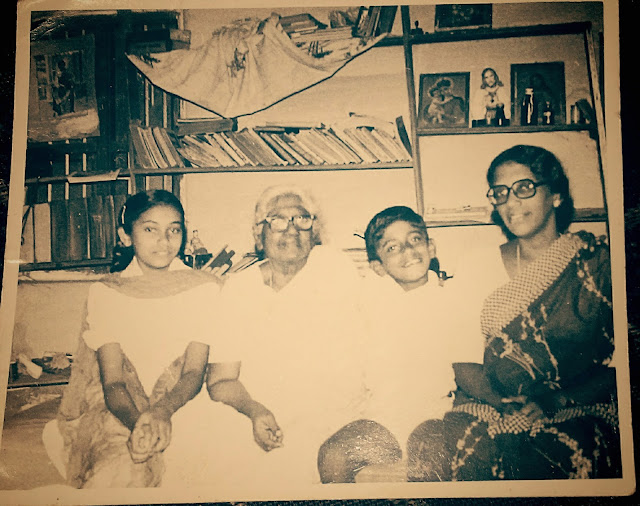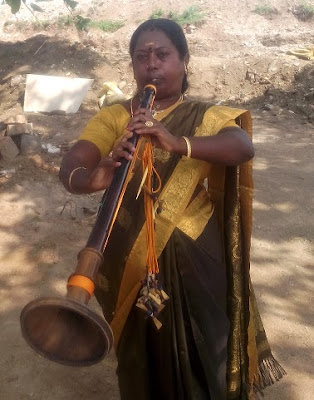 |
| Noboru Karashima |
While many of the present day
college and university professors take their jobs as a 'repose' for
the 'rest' of lifetime after their 'herculean tasks' in obtaining
academic research degrees, it is surprising how the distinguished
Japanese Tamil scholar and historian, Prof Noboru Karashima, who
passed away recently, had dedicated his entire life in researching
thousands of stone inscriptions and threw new light on the history of
medieval South India.
 “ Noboru Karashima's first
research article on the two kinds of villages the Alloors and
Eesaanamangalams, which he penned in 1966, threw new light on
the structure of feudalism during the Chola period in 10th
and 11th centuries. By deciphering and researching a
number of inscriptions, Karashima opined that the people in
Alloors, the non-Brahmins,
had joint ownership of agricultural lands, while the individuals in
Eesaanamangalams, the
Brahmin colonies, held the same separately. Because, the Chola kings
brought the Brahmins from outside and donated them the
Eesaanimangalams. The
kings also provided each Brahmin individual a piece of land”
informed
eminent archeologist Y.Subbarayalu, who had worked with Noboru
Karashima for many decades in India and abroad.
“ Noboru Karashima's first
research article on the two kinds of villages the Alloors and
Eesaanamangalams, which he penned in 1966, threw new light on
the structure of feudalism during the Chola period in 10th
and 11th centuries. By deciphering and researching a
number of inscriptions, Karashima opined that the people in
Alloors, the non-Brahmins,
had joint ownership of agricultural lands, while the individuals in
Eesaanamangalams, the
Brahmin colonies, held the same separately. Because, the Chola kings
brought the Brahmins from outside and donated them the
Eesaanimangalams. The
kings also provided each Brahmin individual a piece of land”
informed
eminent archeologist Y.Subbarayalu, who had worked with Noboru
Karashima for many decades in India and abroad. Karashima, a recipient of Padma Shri award, was a professor Emeritus at the University of Tokya and Taisho University. He was author of the books A Concise History of South India, South Indian History and Society, South Indian History in Transition and many more.
 Paying
tributes to his departed archeology peer in a meeting organized by
Thamizhnadu Kalai Ilapkkiya Perumandram in
the city recently, Subbarayalu pointed out:
Paying
tributes to his departed archeology peer in a meeting organized by
Thamizhnadu Kalai Ilapkkiya Perumandram in
the city recently, Subbarayalu pointed out:
 “Karashima
was planning to visit Coimbatore in January, 2016 and go to Ooty, his
favorite hill station, and from there to Mysore and Chennai to meet
his friends. But his wish didn't come true ”
“Karashima
was planning to visit Coimbatore in January, 2016 and go to Ooty, his
favorite hill station, and from there to Mysore and Chennai to meet
his friends. But his wish didn't come true ”
R.
Poongundran, another veteran archeologist and former Assistant
Director, Tamil Nadu Archeology Department,averred:
“ The
research articles penned by Karashima were scientific. They throw
light on the social life, ecology and economic conditions of ancient
Tamil Nadu under Cholas. His book A Concise History of
South India is a comprehensive
work after K.A Nilakanta Sastri's A History of South
India”
Explaining
the educational system in Japan during the student days of Karashima,
Subbarayalu noted that the country excelled in all fields as her
people studied all sciences only through their mother tongue.
“ Karashima
earlier penned his research articles even on the history of Tamil
Nadu only in Japanese. Nevertheless, for the first time, he
presented a research paper in English only at the First World Tamil
Conference, held in Kuala Lumpur in 1966” said Subbarayalu.
Remembering
his last communication with Karashima, Subbarayalu worried:
“I
received Karashima's email on October 18 regarding a symposium to be
held in Japan. But I never imagined that would be his last
communication to me. I later learned that he was hospitalized for
about a month and breathed his last on November 26”
Link to my article in The New Indian Express: http://epaper.newindianexpress.com/c/7551793


















.jpg)






